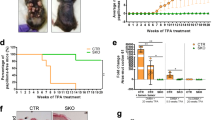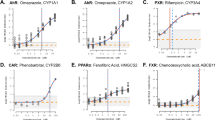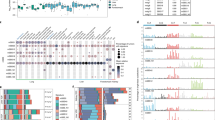Abstract
ENVIRONMENTAL chemical carcinogens are usually non-reactive and have to be enzymatically activated before they can manifest their biological effects1–6. Many cell types, including those used for mutagenesis studies, are not capable of activating such procarcinogens; mutagenesis in these cells has been studied by the addition of an enzymatically active liver subcellular fraction7–9. However, these liver subcellular fractions readily activate a wide spectrum of compounds into potent mutagens including those which are not carcinogenic to the liver. In addition subcellular preparations differ from intact cells in the profile of the metabolites10,11 and DNA adducts12,13 formed after metabolism of various potent carcinogens such as aflatoxin B1 (AF), benzo(a)pyrene (BP), and 7,12-dimethylbenz(a)anthracene. These results suggest that the use of sub-cellular fractions does not truly simulate the in vivo situation and that it may be advantageous to use intact cells for metabolic activation of chemical carcinogens. Therefore, studies of carcinogen metabolism and mutagenic activity in cultured cells derived from different tissues should more truly reflect the in vivo situation and should also provide insight into the problem of tissue specificity in chemical carcinogenesis. Metabolic activation by intact cells of different carcinogens into intermediates which are mutagenic to mammalian cells has been reported4,14–19. This report compares the abilities of two different cell types, fibroblasts and liver cells derived from rats, to metabolise two carcinogens (BP, a potent skin and lung carcinogen which can also produce fibrosarcomas20, and AF, a potent liver carcinogen21) to water-soluble products, to intermediates which bind to cellular DNA, and to intermediates which are mutagenic to Chinese hamster V79 cells. Ouabain resistance was used as the genetic marker in V79 cells14,22.
This is a preview of subscription content, access via your institution
Access options
Subscribe to this journal
Receive 51 print issues and online access
$199.00 per year
only $3.90 per issue
Buy this article
- Purchase on Springer Link
- Instant access to full article PDF
Prices may be subject to local taxes which are calculated during checkout
Similar content being viewed by others
References
Miller, J. A. Cancer Res. 30, 559–576 (1970).
Heidelberger, C. A. Rev. Biochem. 44, 79–121 (1975).
Gelboin, H. V. Cancer Res. 29, 1272–1276 (1968).
Huberman, E. & Sachs, L. Int. J. Cancer 13, 326–333 (1974).
Huberman, E. & Fogel, M. Int. J. Cancer 15, 91–98 (1975).
Ames, B. N., Durston, W. E., Yamasaki, E. & Lee, F. D. Proc. natn. Acad. Sci. U.S.A. 70, 2281–2285 (1973).
McCann, J. B. & Ames, B. N. Proc. natn. Acad. Sci. U.S.A. 73, 950–954 (1976).
Krahn, D. F. & Heidelberger, C. Mutat. Res. 46, 27–44 (1977).
Kuroki, T., Drevon, C. & Montesano, R. Cancer Res. 37, 1044–1050 (1977).
Selkirk, J. K. J. Toxicol. environ. Health 2, 1245–1258 (1977).
Decad, G. M., Hsieh, D. P. H. & Byard, J. L. Biochem. biophys. Res. Commun. 78, 279–287 (1977).
Newbold, R. F., Wigley, C. B., Thompson, M. H. & Brooks, P. Mutat. Res. 43, 101–116 (1977).
Bigger, C. A. H., Tomaszewski, J. E. & Dipple, A. Biochem. biophys. Res. Commun. 80, 229–235 (1978).
Huberman, E. & Sachs, L. Proc. natn. Acad. Sci. U.S.A. 73, 188–192 (1976).
San, R. H. C. & Williams, G. M. Proc. Soc. exp. Biol. Med. 156, 534–538 (1977).
Harris, C. C., Hsu, I. C., Stoner, G. D., Trump, B. F. & Selkirk, J. K. Nature 272, 633–634 (1978).
Kuroki, T. & Drevon, C. Nature 271, 368–370 (1978).
Langenbach, R., Freed, H. J. & Huberman, E. Proc. natn. Acad. Sci. U.S.A. 75, 2864–2867 (1978).
Hsu, I. C. et al. Proc. natn. Acad. Sci. U.S.A. 75, 2003–2007 (1978).
Survey of Compounds Tested for Carcinogenic Activity (Public Health Service, National Institutes of Health, Bethesda, 1973).
Wogan, G. N. in Liver Cell Cancer (eds Camerson, H. M., Linsell, D. A. & Warwick, G. P.) 121–151 (North-Holland, New York, 1976).
Baker, R. M. et al. Cell 1, 9–21 (1974).
Laishes, B. A. & Williams, G. M. In Vitro 12, 521–532 (1976).
Huberman, E., Selkirk, J. K. & Heidelberger, C. Cancer Res. 31, 2161–2167 (1971).
Burke, M. D., Vadi, H., Jernstrom, B. & Orrenius, S. J. biol. Chem. 252, 6424–6431 (1977).
Author information
Authors and Affiliations
Rights and permissions
About this article
Cite this article
LANGENBACH, R., FREED, H., RAVEH, D. et al. Cell specificity in metabolic activation of aflatoxin B1 and benzo(a)pyrene to mutagens for mammalian cells. Nature 276, 277–280 (1978). https://doi.org/10.1038/276277a0
Received:
Accepted:
Issue Date:
DOI: https://doi.org/10.1038/276277a0
Comments
By submitting a comment you agree to abide by our Terms and Community Guidelines. If you find something abusive or that does not comply with our terms or guidelines please flag it as inappropriate.



